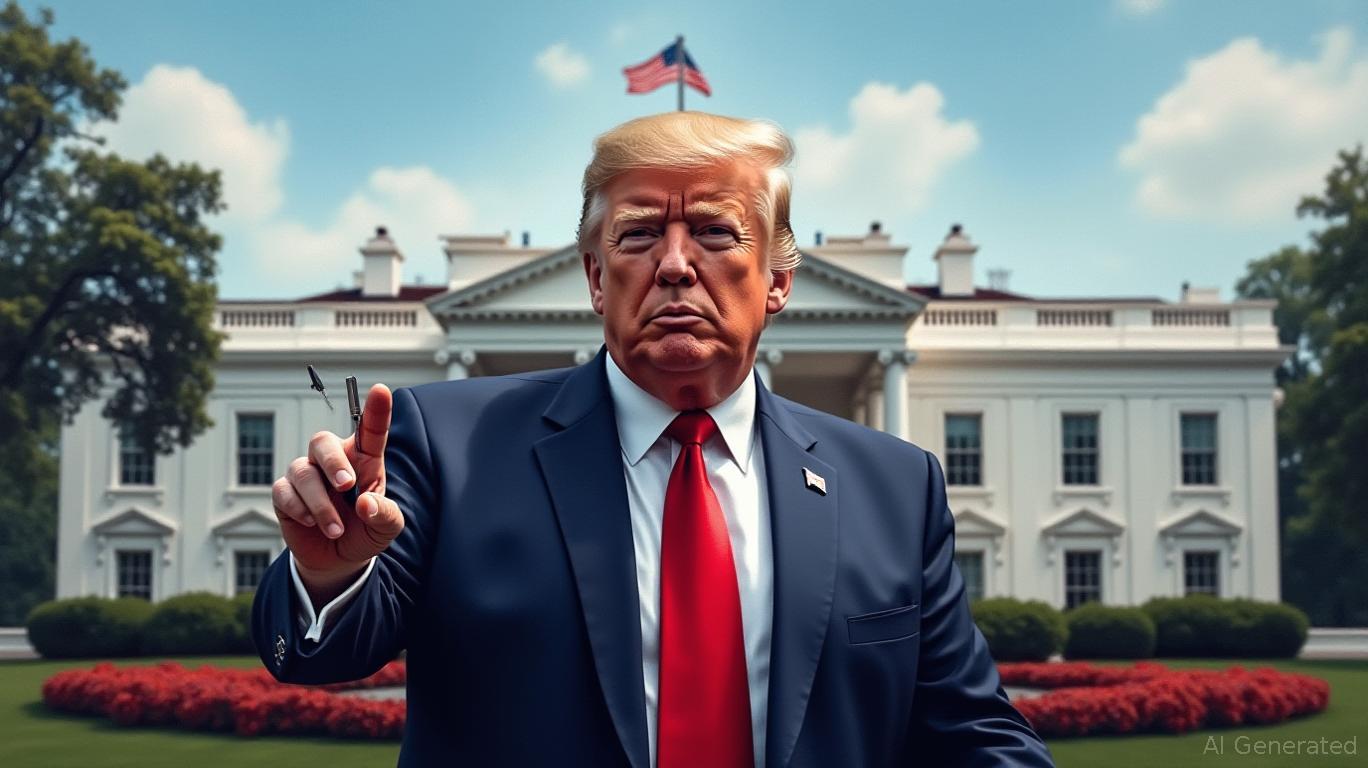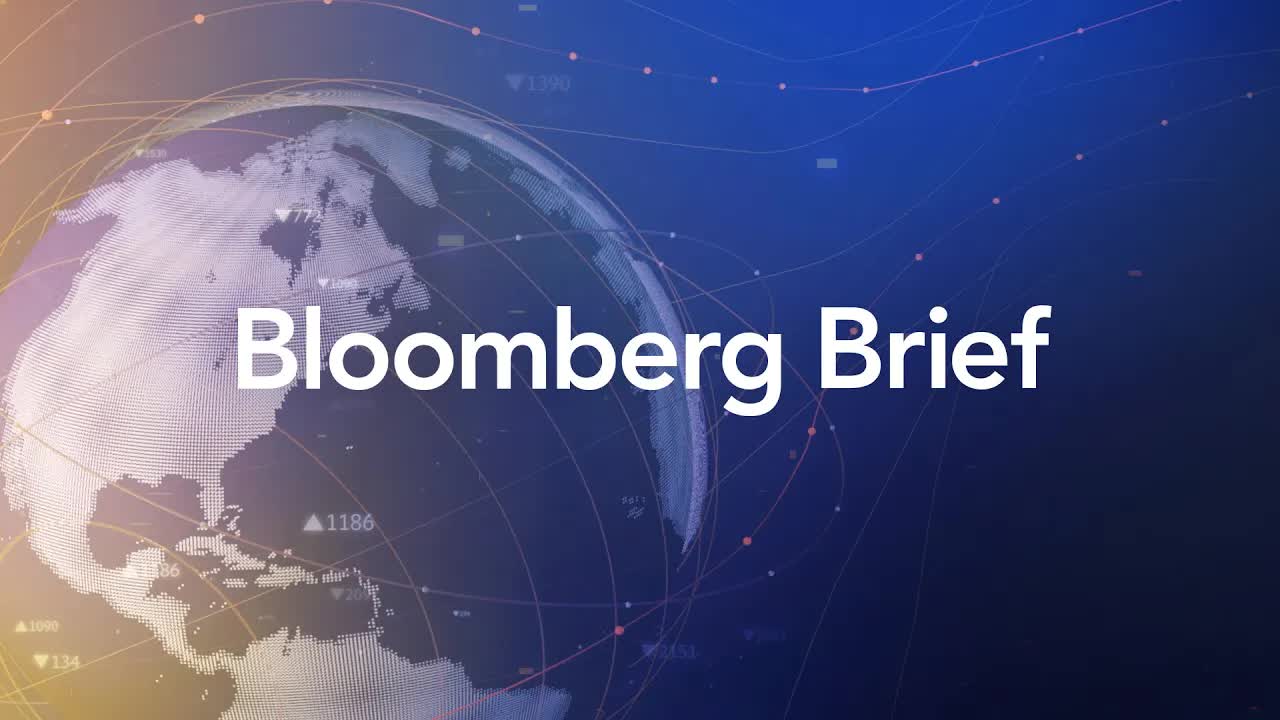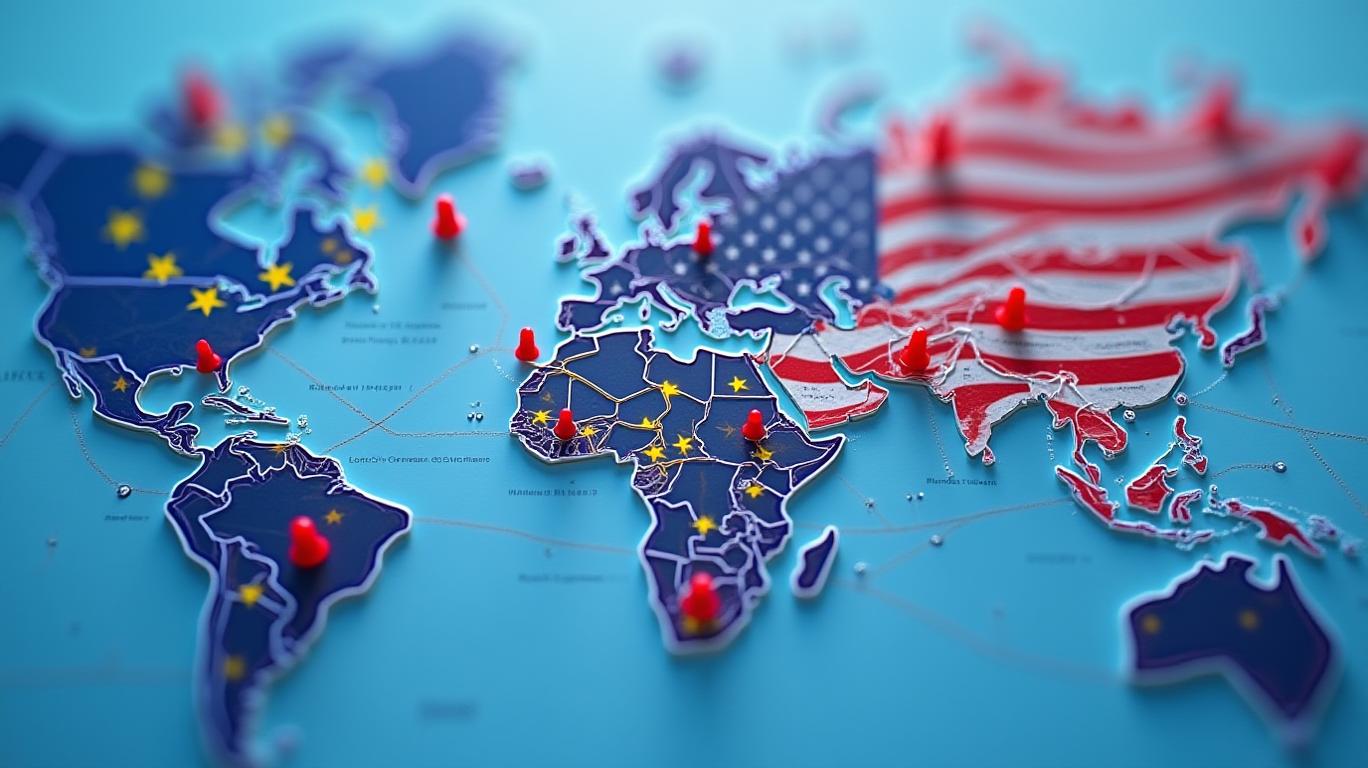Tariffs and Turbulence: Navigating Middle East Economic Uncertainties
The Middle East, a cornerstone of global energy markets and a strategic trade hub, faces mounting economic pressures as U.S. tariffs and geopolitical tensions reshape its growth trajectory. With oil prices in freefall and trade diversion risks escalating, the region’s reliance on hydrocarbons and its exposure to global supply chain shifts are testing its resilience. Here’s how investors can parse the risks—and spot opportunities.
Ask Aime: "Are Middle East oil prices tanking in the face of US tariffs and geopolitical turmoil?"

The Direct Hit: Oil-Dependent Economies in the Crosshairs
The U.S. tariffs, which imposed a 10–50% duty on Middle Eastern imports, have indirectly amplified fiscal pressures by driving oil prices below $63/barrel—nearly half their 2022 peak. For Gulf states, this is a critical vulnerability.
- Saudi Arabia: Requires $91/barrel to balance its budget. With goldman sachs forecasting a further drop to $58/barrel by 2026, its deficit could balloon to $30.8 billion, jeopardizing Vision 2030 projects.
- Iran: Needs $124/barrel but faces sanctions that limit its exports to 1.4 million barrels/day, leaving a fiscal shortfall of nearly one-third of its budget.
- UAE and Qatar: Better insulated by non-oil sectors (e.g., tourism, LNG) and lower breakeven prices ($57/barrel for the UAE).
Source: IMF, Goldman Sachs
Trade Diversion: A Double-Edged Sword
As Chinese and EU exporters flee U.S. tariffs, the Gulf is becoming a dumping ground for excess goods. This echoes the 2017 steel crisis, when Gulf steelmakers were undercut by cheaper imports.
- Aluminum Sector: UAE’s Emirates Global Aluminium (EGA) faces margin pressure from 10% tariffs on U.S. exports. Competitors like Canada’s Alcan, protected by USMCA, now hold a cost advantage.
- Pharmaceuticals: Gulf firms are pivoting to Africa and South Asia, but risks remain if cheaper generics flood regional markets.
Source: Jordan Chamber of Industry
Jordan’s $1.1 billion apparel sector, hit by a 20% tariff, has seen exports drop 15% year-on-year, threatening thousands of jobs.
Geopolitical and Fiscal Pressures
- Reduced Foreign Aid: U.S. cuts to aid, particularly for conflict zones like Syria and Lebanon, are delaying reconstruction. The IMF’s $3 billion Resilience and Sustainability Trust for Jordan highlights the region’s reliance on external support.
- Climate and Debt Risks: GCC nations face $1.2 trillion in climate adaptation costs by 2050, while Lebanon’s stalled IMF program underscores the perils of delayed reforms.
Where to Invest Amid the Storm
Despite the turbulence, the region offers pockets of resilience and growth:
- Diversified Economies:
- UAE: Non-oil GDP grew 3.5% in 2023, fueled by tourism and logistics. The Dubai Expo 2020 legacy projects and free trade zones remain strong draws.
Qatar: LNG exports, accounting for 70% of revenue, are bolstered by long-term contracts with Asia.
Tech and Logistics:
- Saudi Arabia: Vision 2030’s focus on tech hubs (e.g., NEOM) and digital infrastructure is attracting FDI.
GCC-Asia Trade Corridors: Investments in ports and rail (e.g., Saudi-Oman rail link) could offset U.S. trade losses.
Regional Cooperation:
- The GCC’s push to deepen ties with Africa and South Asia via trade agreements and digital payment systems (e.g., Saudi Arabia’s partnership with Kenya’s Jumia) could mitigate reliance on traditional markets.
Source: Saudi Ministry of Finance
Conclusion: Navigating the Rough Seas
The Middle East’s economic outlook hinges on three key factors: oil price stability, diversification success, and geopolitical risk management. While fiscal deficits and trade diversion pose near-term threats, the region’s strategic location and long-term growth plans—backed by $1.5 trillion in planned infrastructure spending—offer a foundation for recovery.
Investors should prioritize:
- Resilient Sectors: LNG, pharmaceuticals (e.g., Saudi’s biotech hubs), and digital infrastructure.
- Geographically Diversified Firms: UAE-based logistics giants (DP World) and Qatar’s LNG exporters (QatarEnergy).
- ETFs: Consider sector-focused funds like the iShares MSCI UAE ETF (MSAE) or broader Gulf ETFs (GULF).
The path to stability will be bumpy, but the region’s capacity to pivot toward new markets and technologies positions it to emerge stronger—if policymakers can sustain reforms and avoid overreliance on hydrocarbons.
Final Note: Monitor oil prices and U.S.-China trade dynamics closely; both will be critical to Middle East growth in 2025 and beyond.










